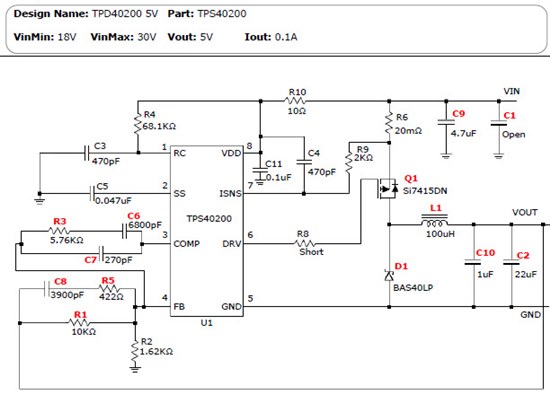I have designed a circuit using your TPS40200 to convert 28V to 5V. Without anything hooked up, I get a good 5V output. When I connect a 5V micro and power the the circuit from a 28V battery, the micro gets smoked (literally) every time. I suspect the instantaneous power available from the battery couple with power-on transients on the 5V output are blowing the micro.
I have seen several suggestions:
Increase the soft-start delay - is there a limit to the amount of delay? 0.047uF SS cap blow the micro. 0.1uF SS cap is a bit better, more like a slow blow. Any suggestions?
Add a snubber to the output
Add a TVS diode to the output
Does anyone have any idea as to why the micro is blowing and any suggestions on how to fix the problem?
Thanks,


